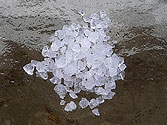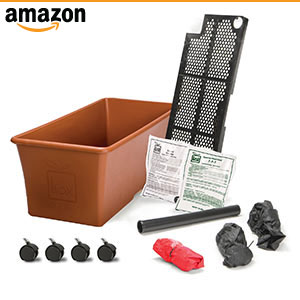Climate Change and Water Conservation:
We live in a time of unprecedented global crisis. Global warming has long been replaced by the term "Climate Change". And climate change is hitting us hard. Natural disasters have devastated huge swaths of land. Flooding occurs on massive scales, while many populations are fighting droughts that persist year after year.
As river beds dry up and aquifers are slowly depleted, people are beginning to scrutinize the practices of the agricultural industry. Growing vegetables, fruits, nuts and livestock using conventional practices is sucking our planet dry. We may feel powerless to shape industrial techniques. But what about us at home? How can we conserve water? Can we still garden effectively, even in drought ridden climates?
Water Conservation Tips in a Drought
REDUCE EVAPORATION: Trying to conserve water? Evaporation of water at the soil surface is an easy place to start. By mulching with a thick layer of wood chips or bark you can effectively trap much of that soil moisture. Lots of organic materials will serve as a mulch. You could use grass clippings, leaves, straw or compost. Such materials are permeable. So when it rains, the water seeps into the ground. But then it gets trapped and the moisture stays locked in. Mulches are great too, as a natural long term source of nutrients and even help with weed suppression. Plastic mulches will work and retaining water as well. But these should be managed in a way that water run-off does not occur.
SOIL AMENDMENTS: When trying to conserve water, there are several additives that can enhance the water retention of your soil. Adding peat moss can increase water retention. It is a common additive for both containers and even right in the ground. Coir and vermiculite work as good container options. Coir is derived from highly renewable coconut fiber, making it a more sustainable additive. In general, the inclusion of organic matter is a great way to boost water retention. And this can often be done through the use of local resources.
Some gardeners have found water absorbent polymer crystals to be highly effective. These super-absorbent polymers are sometimes referred to as water crystals. Soil Vigor is an example of such a product. Soil Vigor crystals are made from a potassium-based copolymer. When these crystals come in contact with water, they swell up, absorbing the water. Then the water is slowly released over time. These water crystals claim to hold 40 times more water than peat moss. They can last for 5-7 years. When they finally do break down, they turn into carbon dioxide, water and ammonia.
Even when using such approaches, the moisture content in the soil is likely to fluctuate. If it gets too low, plants will wilt, seedlings will die and fruit will not set. So a dedicated gardener may find himself outside on 90° days trying to re-hydrate withering plants, afraid to go away for even a day. A search for something better led me to a very different approach...
← Watering with Tap Water
SIPs: Self-watering, Sub-irrigated Planters →



![Just Add Water [Gardening T-Shirt Design]](images/Just-Add-Water_Gardening-Tshirt-th.jpg)
